Recording "Sgt. Pepper's Lonely Hearts Club Band"
Nov 24, 1966 - Apr 20, 1967 • Songs recorded during this session appear on Sgt. Pepper's Lonely Hearts Club Band (UK Mono)
Recording studio: EMI Studios, Studio Two, Abbey Road
Session Mar 06, 1967 • Recording and mixing "Sgt. Pepper's Lonely Hearts Club Band"
Article Mar 07, 1967 • Peter Blake and Jann Haworth have supper at Paul's
Session Mar 07, 1967 • Recording "Lovely Rita"
Interview Mar 07, 1967 • Paul McCartney interview for Granada Television
Some of the songs worked on during this session were first released on the "Sgt. Pepper's Lonely Hearts Club Band (UK Mono)" LP.
The Beatles recorded the basic track of “Lovely Rita” on February 23, 1967, with Paul McCartney recording his lead vocals the next day, February 24. On this day, from 7 pm to 2:30 am, The Beatles then added backing vocals and kazoo-like noises.
Some sources (like “That Magic Feeling: The Beatles’ Recorded Legacy, Volume Two, 1966-1970” by John C. Winn) indicate that notable musicians such as Tony Hicks of the Hollies, David Crosby of the Byrds, Shawn Phillips, and the brother of Ravi Shankar, George Harrison’s sitar teacher, visited The Beatles on February 24. The April 1967 edition of Beat Instrumental published a report on the session stating “This particular session was concerned with completing the vocal by Paul, John and George over a backing track.” Additionally, in various interviews, Shawn Phillips claimed that he contributed to the backing vocals of “Lovely Rita“. It is therefore likely these visitors were present at the March 7 session, instead of the February 24 session. This is however slightly at odds with Geoff Emerick’s recollection that “There were a few visitors to the studio [on March 7], including Davy Jones of the Monkees.”
Following the tape reduction done on February 24, there was only one track available on Take 11 for the backing vocals. Paul McCartney, John Lennon, George Harrison, and possibly Shawn Phillips recorded the backing vocals, which included grunts, moans, and strange sounds. They also used toilet paper taken from EMI Studios’ lavatory by Mal Evans and Neil Aspinall, wrapped around combs, and blown through them to create kazoo-like noises.
Jerry Hammack, in his book “The Beatles Recording Reference Manual: Volume 3: Sgt. Pepper’s Lonely Hearts Club Band through Magical Mystery Tour (late 1966-1967)“, reports that “Howlett [in the 2017 “Sgt. Pepper’s Lonely Hearts Club Band” box set] credits each of The Beatles with the comb and paper parts, but audio evidence indicates only a single performance was tracked. It is not known which Beatle performed the part.“
Work on “Lovely Rita” continued on March 21, 1967.
We then left ‘Lovely Rita’ to her own devices for a couple of weeks, until 7 March. That evening we recorded down John’s and Paul’s backing vocals, on Track 4, with heavy tape echo on the voices. There was a lot of off-the-cuff fooling around, and we even resorted to a choir of paper and combs, as a mock brass section. They all blew through combs covered with regulation-issue EMI toilet paper, to create a bizarre, kazoo-like sound. George complained frequently to the EMI management about the horrible slippery hardness of its loo paper. (Each sheet had the legend ‘Property of EMI stamped across it!) He said it was OK for wrapping round a comb and blowing through, but as to using it for what it was intended, you could forget it! (The tissue issue finally had to get to board level before it could be sorted out, and a better class of toilet paper was eventually installed for our use!)
A selection of these weird and wonderful noises made by John, with a little help from the others, was to finish up on the play-out of the song.
George Martin – From “With A Little Help From My Friends: The Making of Sgt. Pepper“, 1995
“Lovely Rita” was another track where the Beach Boys influence really manifested itself. Paul made a point of telling George Martin that he wanted the backing vocal arrangement to emulate the way the California singing group might approach the song. There were lots of fun overdubs on that track, including the four band members standing around a single microphone humming through a comb and paper, each priceless Beatle comb carefully wrapped with a single layer of the standard issue extra-scratchy EMI toilet paper that we were all constantly complaining about. On that same very silly night, they overdubbed the heavy breathing at the end of the song, with John looning about and sending the others — and Richard and me up in the control room — into fits of laughter. There were a few visitors to the studio that evening, including Davy Jones of the Monkees, and the joss sticks were especially prominent, ensuring that a splendid time was guaranteed for all.
Geoff Emerick – From “Here, There and Everywhere: My Life Recording the Music of The Beatles“, 2006
When they were adding their backing vocals, the boys were spurred on by the heavy tape echo they could hear in their cans, and started fooling around with it. One sound would lead to another. So they would be panting like super-heated mongrels, moaning, cha-cha-cha-ing, clicking their tongues, and making all sorts of strange noises. John always loved messing around like that.
George Martin – From “With A Little Help From My Friends: The Making of Sgt. Pepper“, 1995
Now this is something all Beatles fans will want to know. How did you get singing backup vocals on “Lovely Rita”?
I was friends with Don [Donovan]. Don was friends with Paul. Paul invited us over to the house. And about two days later, Don was talking to Paul and Paul said, “Why don’t you guys come by the studio?” And Don said, “I can’t, but Shawn can come hang out. He’s got a friend you’ll like. He’s name is Stephen Saunders.” And Paul said, “Sure, tell them to come by whenever they want.” So I showed up at the studio with Stephen, and it was as simple as that. Have you seen the picture of me in the studio with those guys and Dave Crosby?
No, I didn’t see it.
Well, there’s a picture on Facebook of some guy named Mark – I can’t remember his name now. He found the picture. And he posted this picture on Facebook. And I’m standing, smiling, behind Stephen. And John Lennon is leaning around the corner of the door. Paul McCartney was in the background, and David Crosby is standing up at the front of the picture. David and I were going into the booth to sing vocals on “Lovely Rita.”
Shawn Phillips – From Stone Cold Crazy: A Very Candid Conversation with Shawn Phillips (jeffcramer.blogspot.com), 2018 – Backing vocals for “Lovely Rita” were recorded on March 7. Either Shawn Phillips didn’t visit The Beatles on February 24 but on March 7, or they did record some backing vocals on this day, and re-record them on March 7.
We’d known each other a year by that point, and Paul invited us to Abbey Road, and we went there. We went to the studio, and at some point Paul says, ‘We need backup vocals on this. This is what I want you to sing.’ So David Crosby and I went in there and we sang backup vocals on ‘Lovely Rita.’
Shawn Phillips – Interview with Goldmine, 2012, reported in When Pink Floyd Visited the Beatles’ ‘Lovely Rita’ Sessions (rollingstone.com)
I was, as near as I know, the first human being besides them and George Martin and the engineers to hear ‘A Day in the Life.’ I was high as a kite – so high I was hunting geese with a rake. They sat me down; they had huge speakers, like coffins with wheels, that they rolled up on either side of the stool. By the time it got to the end of that piano chord, man, my brains were on the floor.
David Crosby – Interview with Filter, reported in When Pink Floyd Visited the Beatles’ ‘Lovely Rita’ Sessions (rollingstone.com)
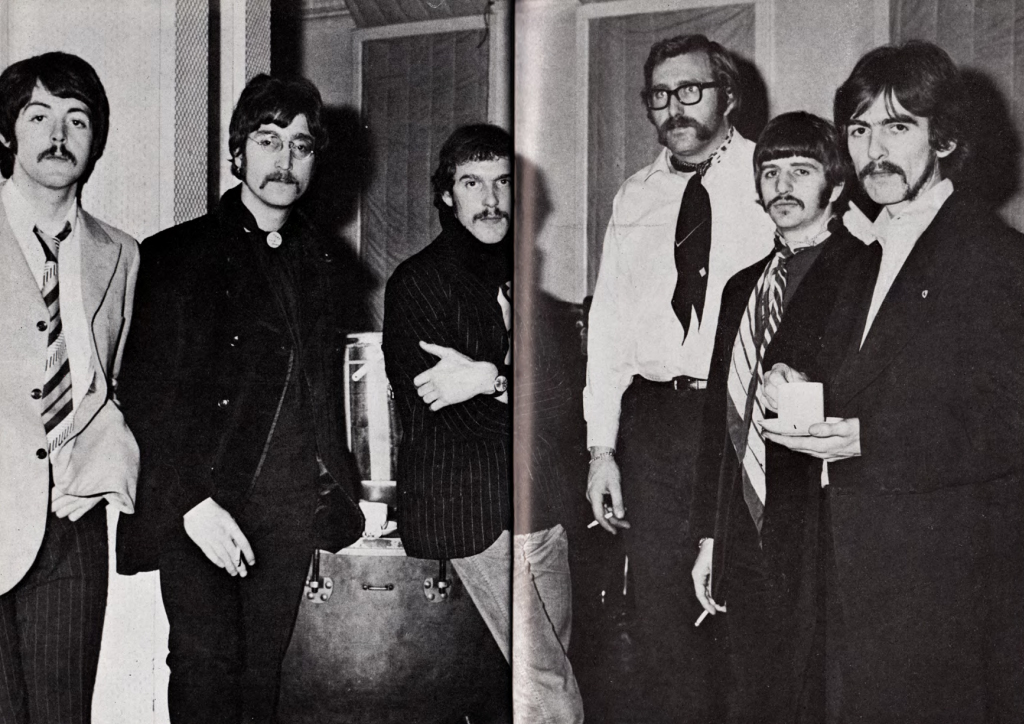
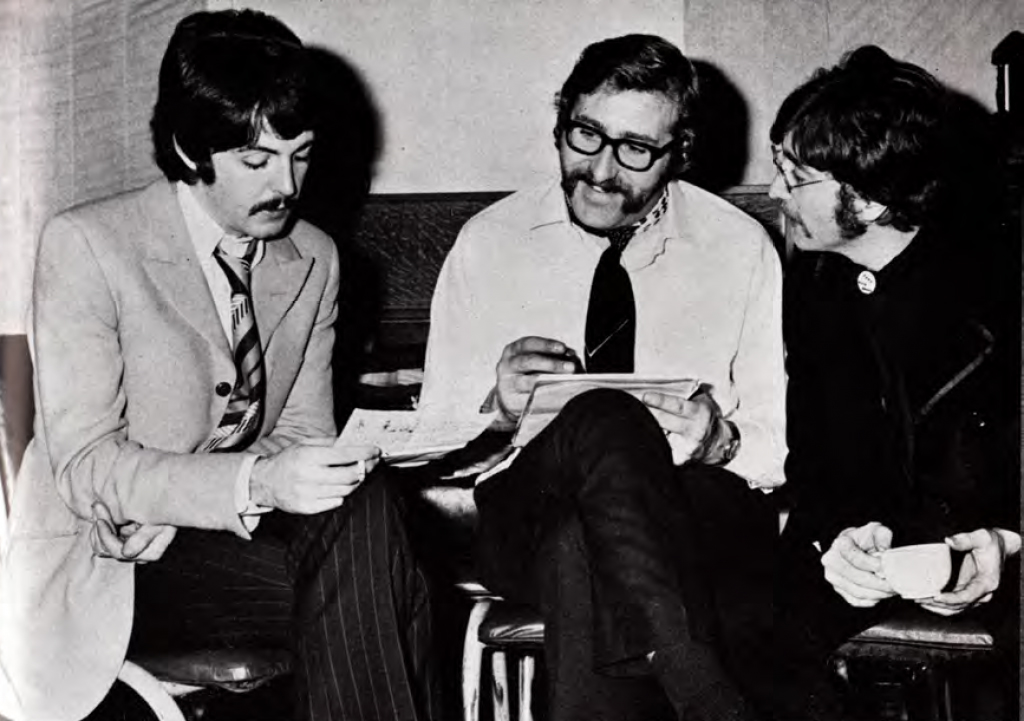
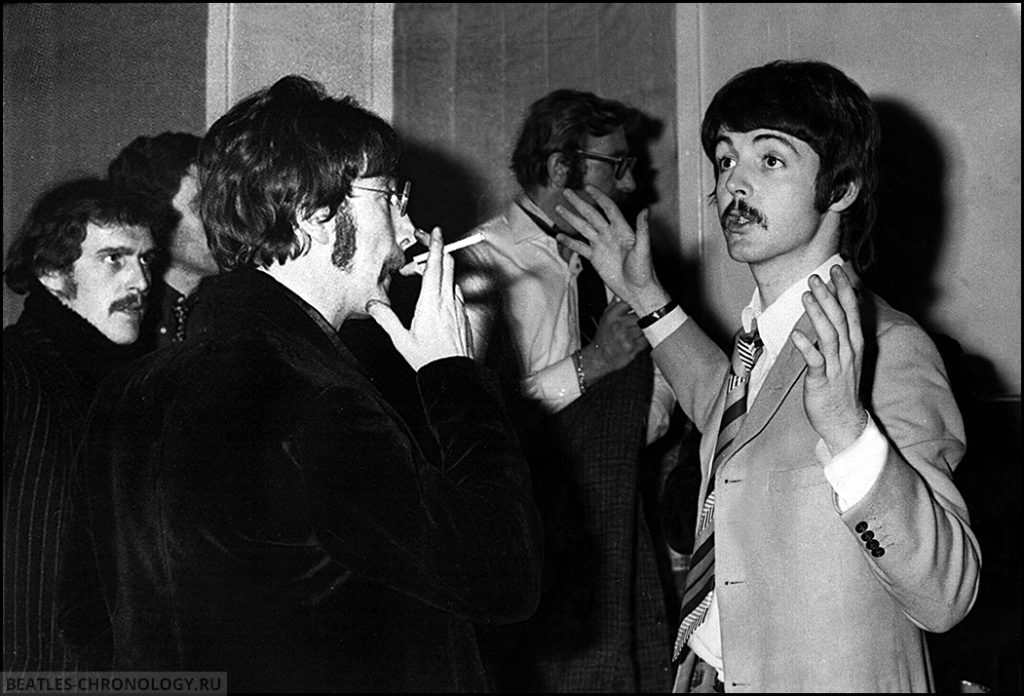
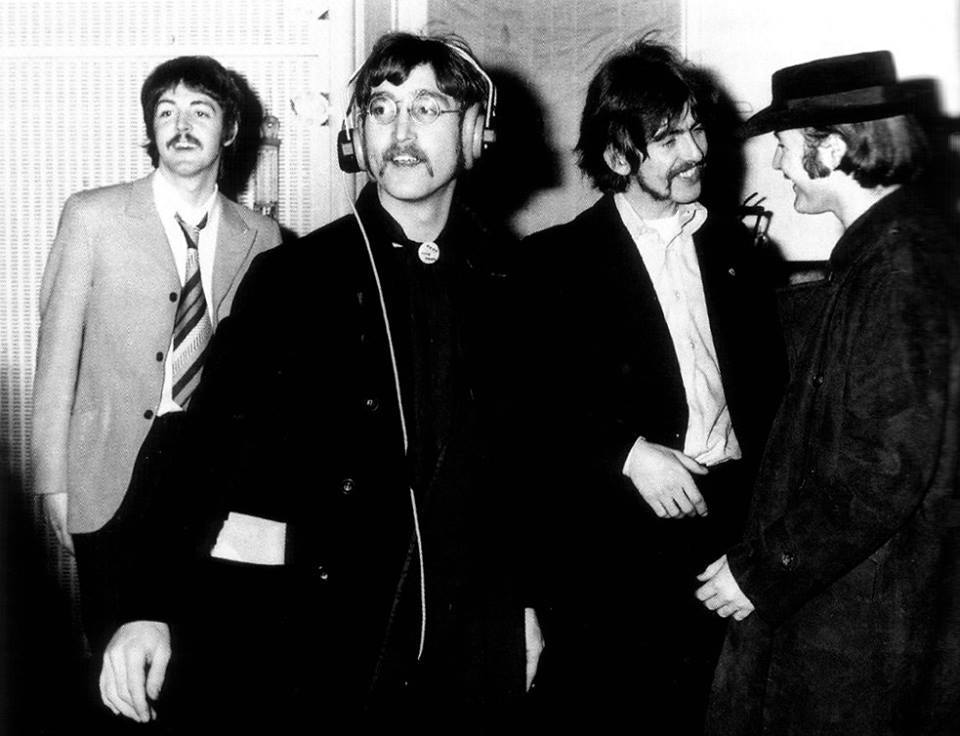
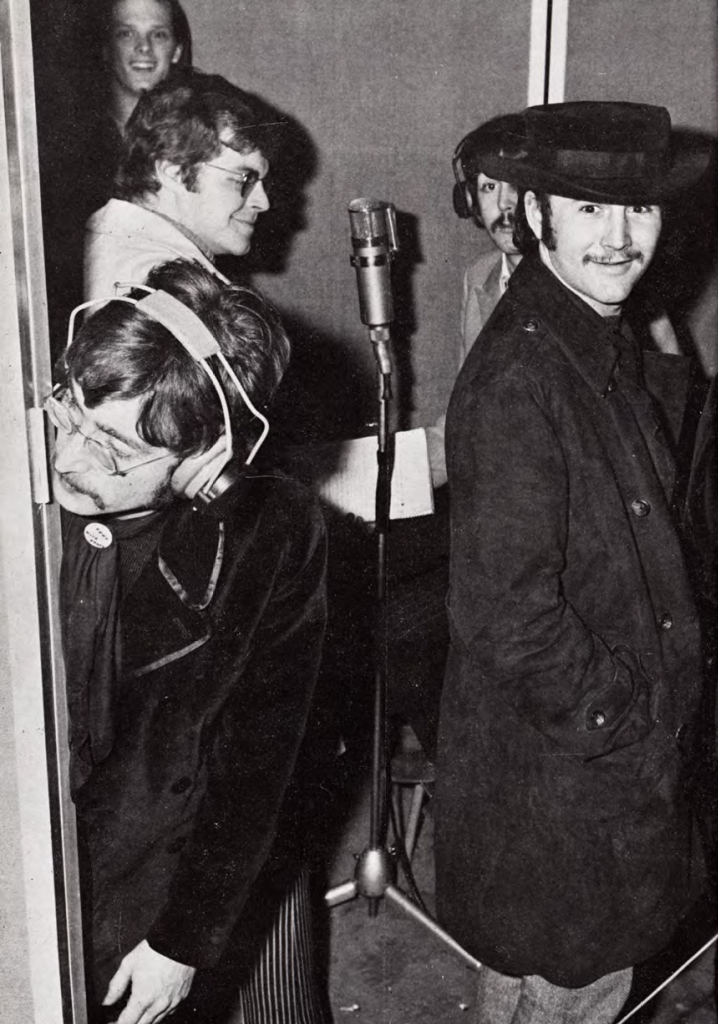
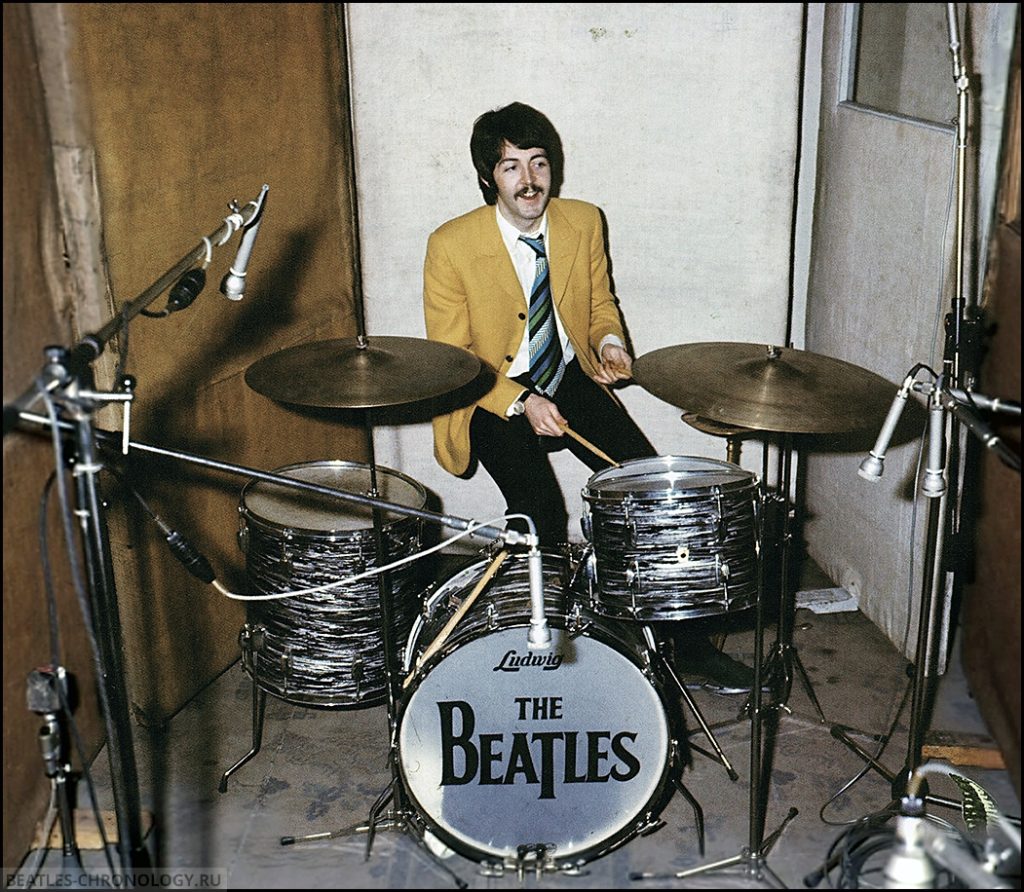
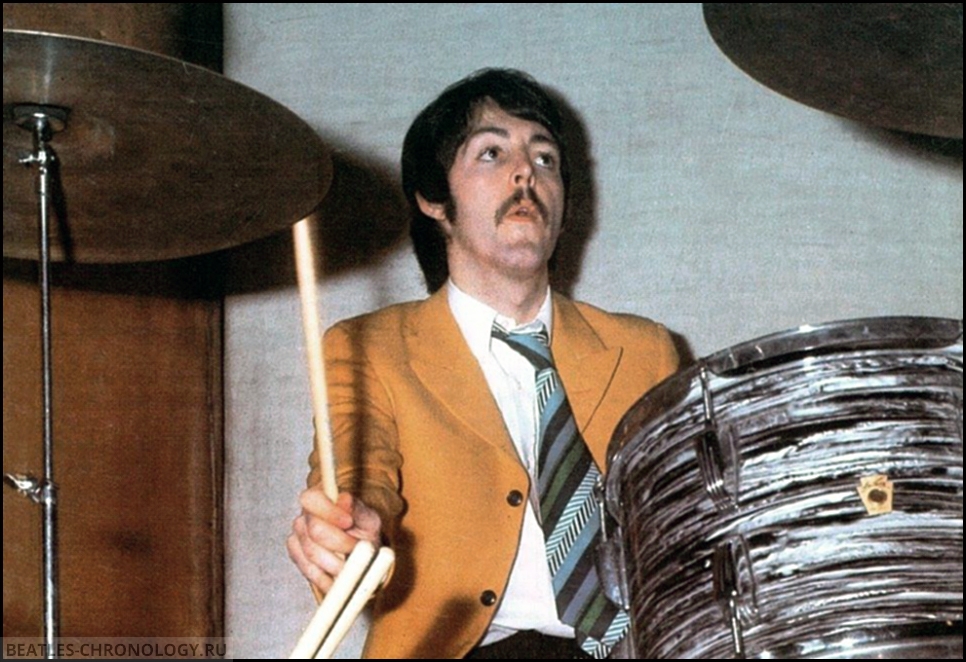
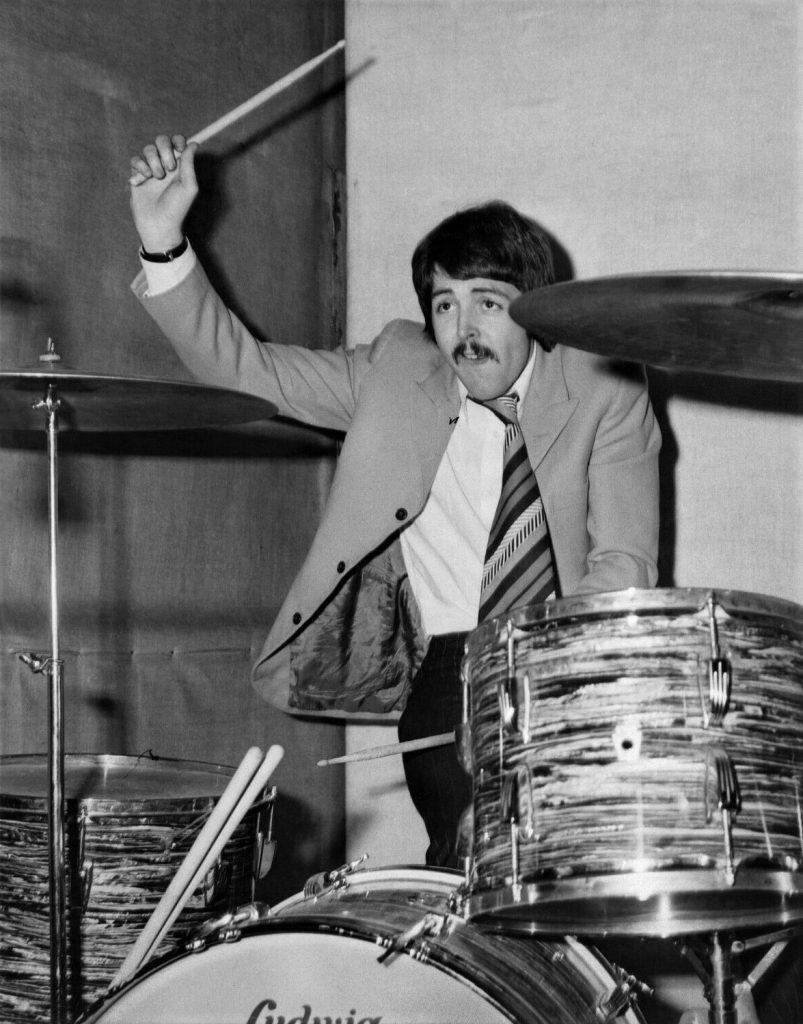
BEATLES NEW L.P. – MOST EXPENSIVE EVER PRODUCER?
THE current Beatles recording sessions are producing some very trendy clothes as well as forward-looking songs. The variety of musical instruments in the studio is only equalled by the varying styles of the Beatles suits, jackets, ties and shoes.
The new album will also be surely one of the most expensive ever produced. Messrs. Lennon, McCartney, Starr and Harrison, together with road managers, Neil Aspinall and Mal Evans, not forgetting recording manager, George Martin, plus engineers, doormen to keep out intruders, etc., have been spending every weekday night in E.M.I.’s No. 2 studio for the past month and there were dozens of sessions in earlier months too. The results, so far, have been “Strawberry Fields Forever” and “Penny Lane”, their recent single, plus six additional tracks for the new album, which means that they are about half-way through.
I estimate that the new LP will eventually cost something like £25.000 to produce! That’s a lot of lolly, far more than any normal LP costs to produce, but we’re talking, after all, about the princes of pop, and any Beatles album must sell at least a million, if not several, all over the world.
So E.M.I. are hardly likely to begrudge the Beatles studio time. Gone are the days when a track would be run through, rehearsed, arranged and a master tape recorded, all in two hours. Now they frequently arrive at the studio with only a vague theme or rough set of lyrics, which they then proceed to play about with, for hours, or often days.
Three guitars and a set of drums are all old hat and apparently considered incapable of backing a new Beatles song. Experiment is everything. The night I was in the studio. George Martin spent half an hour, before the Beatles arrived. dropping spoons, pennies, and any other object he could think of into a large cauldron of water. The bottom of the cauldron was lined with plastic sponge, so that just the resulting splonks. gesplashes and plops would be recorded by the microphone.
Then the fashion display began. Paul zipped into the studio, wearing a lemon yellow jacket, set off by a brightly striped tie. With only a pause to shake hands, he was behind Ringo’s drum kit. demonstrating that if ever the other three Beatles decided to retire, he could do the whole job, songwriting, singing, harmonising with himself on the vocals, playing lead guitar, bass guitar, piano, organ, trumpet and drums.
Then George strolled in. with his Civil War moustache, but minus beard. With that beard he reminded me of an Afghanistan sheep-herder, but the illusion is now gone. His moustache was set off by a long, black, Mississippi gambler’s jacket and black moccasins.
Ringo and John arrived next, having driven up together in John’s Mini — with blacked-out windows, of course. The new moustache and side-boards suit Ringo very much, but curiously, they are much blacker than his medium-brown hair. So much so that some people say that he’s stuck them on. John’s Chinaman-type moustache topped a neckerchief, held together at the throat with a badge inscribed with the words. “Down with Pants”. The contact lenses have now been discarded and he’s wearing the steel-rimmed spectacles that he had made for the film “How I Won The War”. There’s no truth in the rumour that these spectacles are going to be blacked out in the near future, to match his car windows.
No Beatles session is complete without a host of famous visitors. A silent Indian admirer, who turned out to be Ravi Shankar’s brother, sat by George. Hollie, Tony Hicks, strolled in soon after the boys had arrived, to let them know that he had finished. What it was that he had finished, no one revealed. A short while later, Dave Crosby of the Byrds arrived.
This particular session was concerned with completing the vocal by Paul, John and George over a backing track, and they soon disappeared into a large sound box in one corner of the studio, to work on the tracks after they had completed the lyrics. This took Paul and John about half an hour, huddled together with Mal and Neil in one corner, whilst they worked on words and phrases. The Byrd arrived during a break, and after the greeting, was invited into the box by Paul, to help with the vocal.
The Beatles are very much more relaxed these days. During the earlier years of their stardom, in ’63 and ’64, everything was one mad rush. There never seemed to be any time for them to sit and think. The demand for personal appearances was voracious. and no matter how hard they tried to satisfy it. they could never hope to do so. Brian Epstein used to be inundated with a constant stream of telephone calls and letters wanting to know why the Beatles “couldn’t just appear in their town, surely it’s a very small thing to ask?” In between the incredible round of exhausting touring that they undertook, they also appeared on numerous television shows to promote new releases, appeared in two films, wrote dozens of hit songs, arranged and finally recorded them.
It all had to stop, or at least slow down sometime, and, in my opinion, what made the Beatles put an end to the backbreaking touring round the world, more than anything else, was the realisation that very few audiences heard even 10% of what they sang and played on stage. And they are very conscious of what they can do, and so there was one simple answer – stop knocking yourself out for the half a million or so people who can see you personally on a tour in any one country, and concentrate on recording and making films, which can be seen by anyone who wants to, anywhere.
These present recording sessions are the ultimate in any pop star’s life. Superb studio and equipment at their command and unlimited time to use it in. It’s difficult to fault the new combination. No star ever fell because he produced bad records. On the other hand, if the Beatles ever do produce bad records, then they have only themselves to blame.
From Beat Instrumental, April 1967
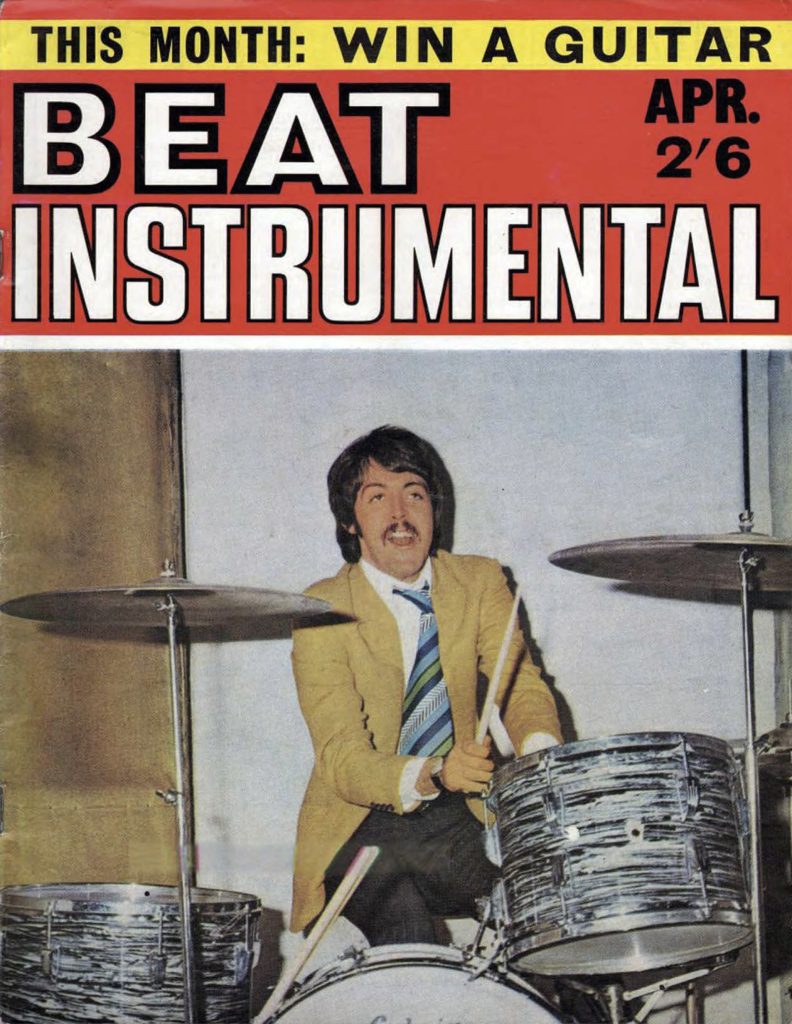
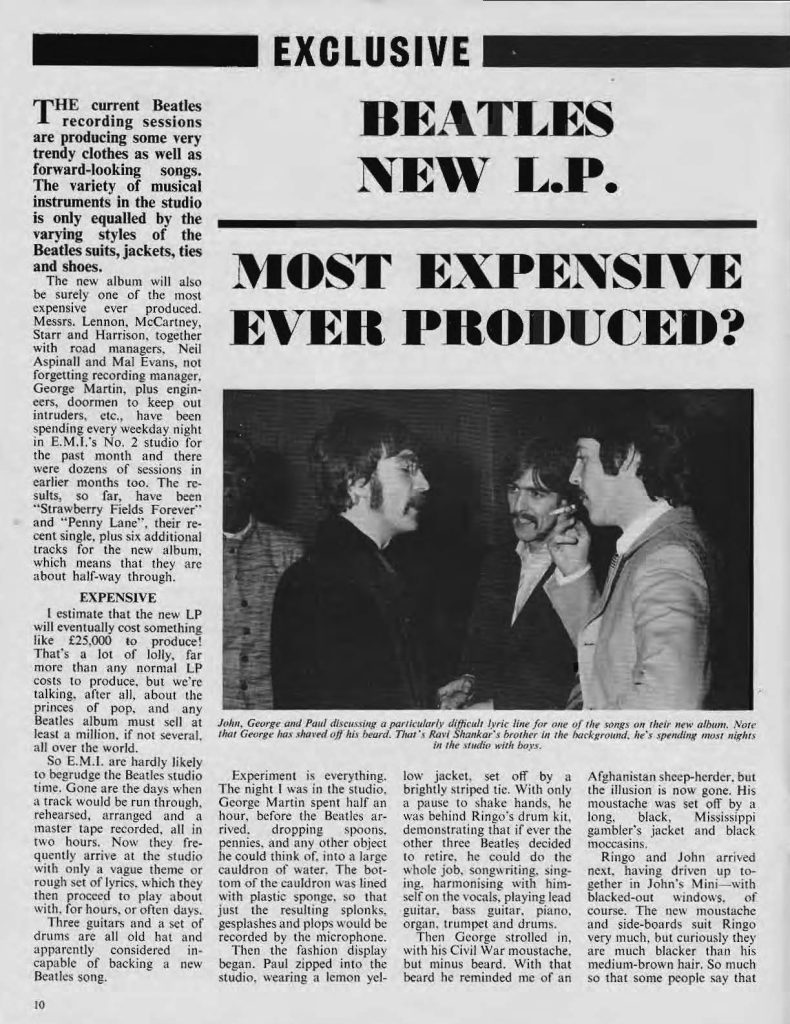
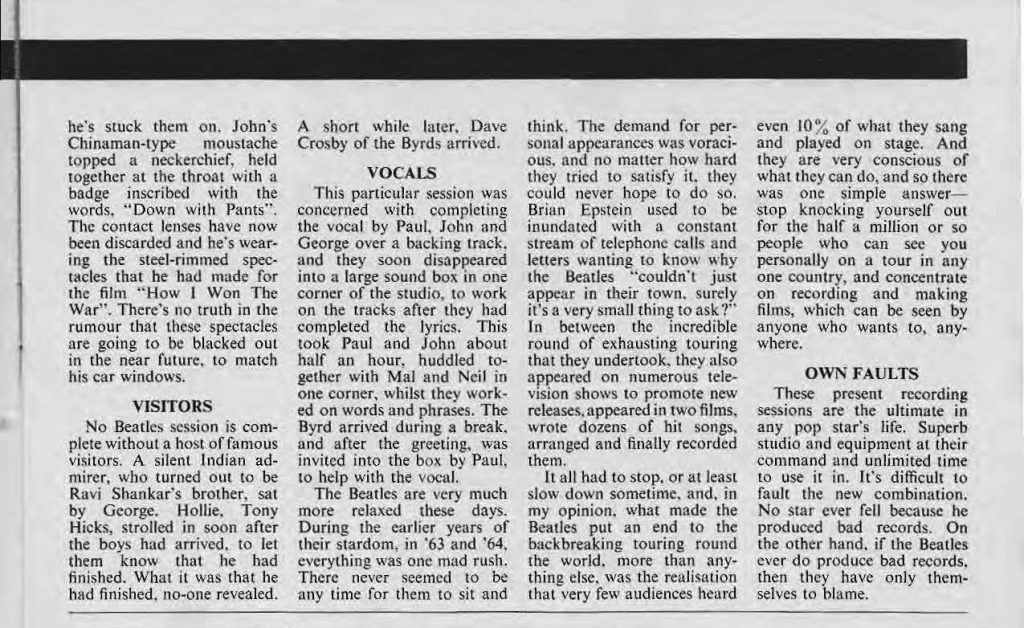
Recording • SI onto take 11
The Complete Beatles Recording Sessions • Mark Lewisohn
The definitive guide for every Beatles recording sessions from 1962 to 1970.
We owe a lot to Mark Lewisohn for the creation of those session pages, but you really have to buy this book to get all the details - the number of takes for each song, who contributed what, a description of the context and how each session went, various photographies... And an introductory interview with Paul McCartney!
The Beatles Recording Reference Manual: Volume 3: Sgt. Pepper's Lonely Hearts Club Band through Magical Mystery Tour (late 1966-1967)
The third book of this critically - acclaimed series, nominated for the 2019 Association for Recorded Sound Collections (ARSC) award for Excellence In Historical Recorded Sound, "The Beatles Recording Reference Manual: Volume 3: Sgt. Pepper's Lonely Hearts Club Band through Magical Mystery Tour (late 1966-1967)" captures the band's most innovative era in its entirety. From the first take to the final remix, discover the making of the greatest recordings of all time. Through extensive, fully-documented research, these books fill an important gap left by all other Beatles books published to date and provide a unique view into the recordings of the world's most successful pop music act.
If we modestly consider the Paul McCartney Project to be the premier online resource for all things Paul McCartney, it is undeniable that The Beatles Bible stands as the definitive online site dedicated to the Beatles. While there is some overlap in content between the two sites, they differ significantly in their approach.

Notice any inaccuracies on this page? Have additional insights or ideas for new content? Or just want to share your thoughts? We value your feedback! Please use the form below to get in touch with us.